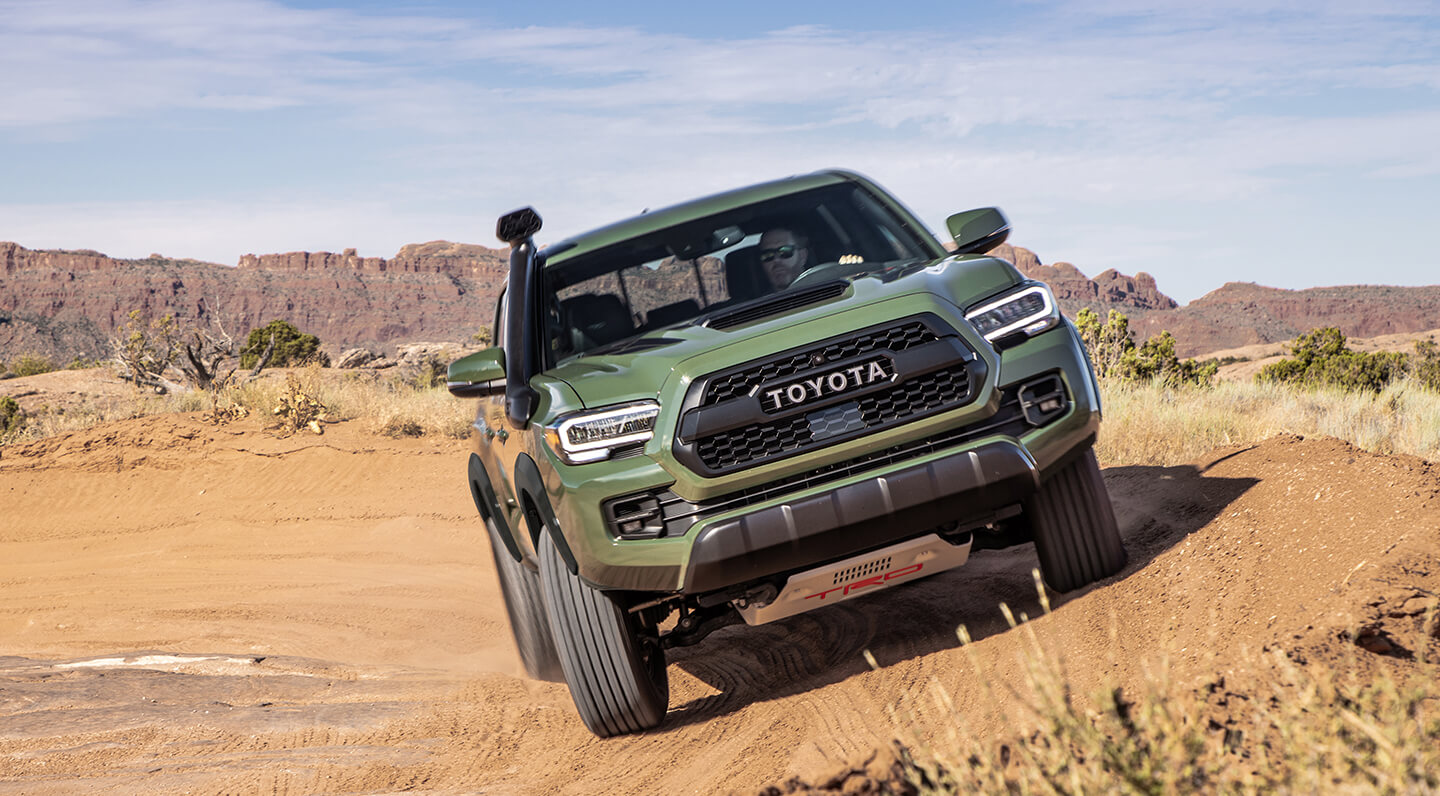
2020 Toyota Tacoma TRD Pro Review
The Tacoma’s popularity traces back to the very earliest Toyota compact pickups. The first 4WD ones debuted way back in 1979. But it was the trucks from the 1980s and 1990s that cemented Toyota’s position as the benchmark for compact 4X4s. Today’s Tacoma is undoubtedly larger, but Toyota has been careful to retain the rugged, honest, and capable formula that made the rig so beloved for generations.
And speaking of generations, this current Tacoma is a relatively old truck. It was last made new back in 2016. Even then, the basic frame and suspension design stretched back to 2005. However, sales have increased every single year since that redesign. So, when it came time for Toyota to update the Tacoma for 2020, it’s not surprising the company took a conservative approach. But the model that received the most attention in the re-fresh this year is also the most capable—the TRD Pro. And that’s the one we asked for.
Our tough-looking $49,833 Army Green Tacoma came fully loaded, even wearing a snorkel too. We were excited to get this rig onto the trail. And so, we pressed it into service on our usual 300-mile mix of city and highway driving, including some time getting very dusty in the dirt. So how does the new Taco Pro measure up? Let’s find out.
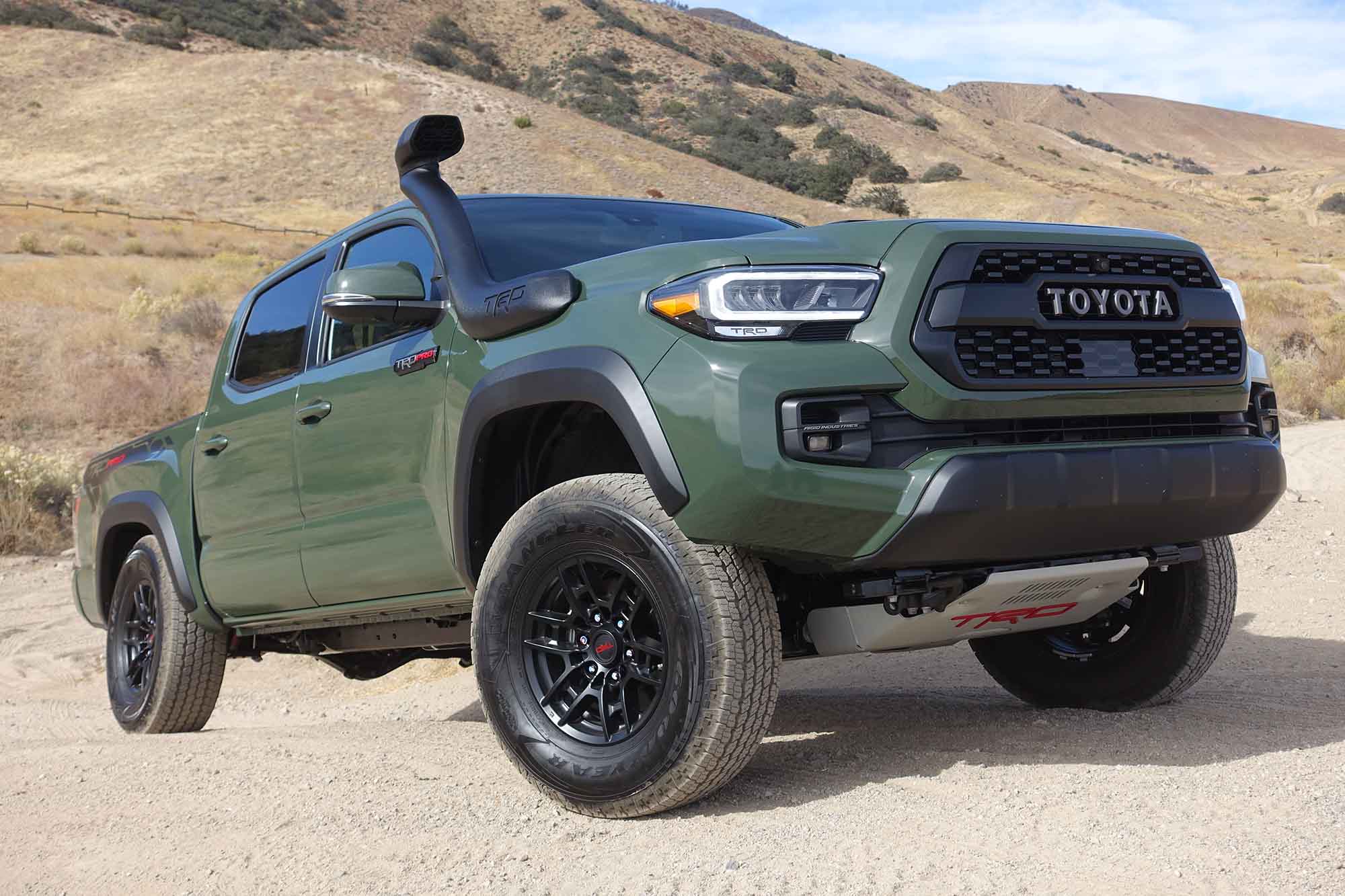
Even with its new dorkel, the new 2020 looks aggressive and right at home in the dirt. Its updated suspension works better on the trail too.
The Hardware
The new 2020 Tacoma might look similar, if not nearly identical, to the 2019 model. But look closely and there are differences. Every new Pro model wears new LED headlights and a redesigned surround for the taillights. Fog lights from Rigid Industries come standard on the Pro models. On the inside, there’s a new 10-way power driver’s seat. And a redesigned 8-inch touchscreen in the center of the dash with standard Apple Carplay and Android Auto complements the interior. In terms of 4WD tech, Toyota now provides Panoramic View Monitor + Multi Terrain Monitor, which shows on-demand running footage of the trail from multiple angles.
The most significant improvements to the TRD Pro are beneath the skin. The TRD engineering team wanted to reduce unsprung weight and so they developed a new wheel design that shaves about 4 pounds per corner. “After those wheels arrived, we wanted to make sure the suspension still worked—and it did not,” says TRD Development Engineering Manager Jakin Wilson. “So, we took the opportunity to do a whole new suspension tune on the shocks front and rear as well as reduce the spring rates on the coils up front.”
The front TRD Pro springs still provide a one-inch boost in height as well as .7 inch more droop travel over standard Tacomas. In the rear, the springs are the same progressive packs as before and provide .8-inch of additional wheel travel over a stock Taco. But they do not alter the truck’s ride height in the rear. Re-tuned Fox 2.5-inch internal bypass dampers are used front and rear.
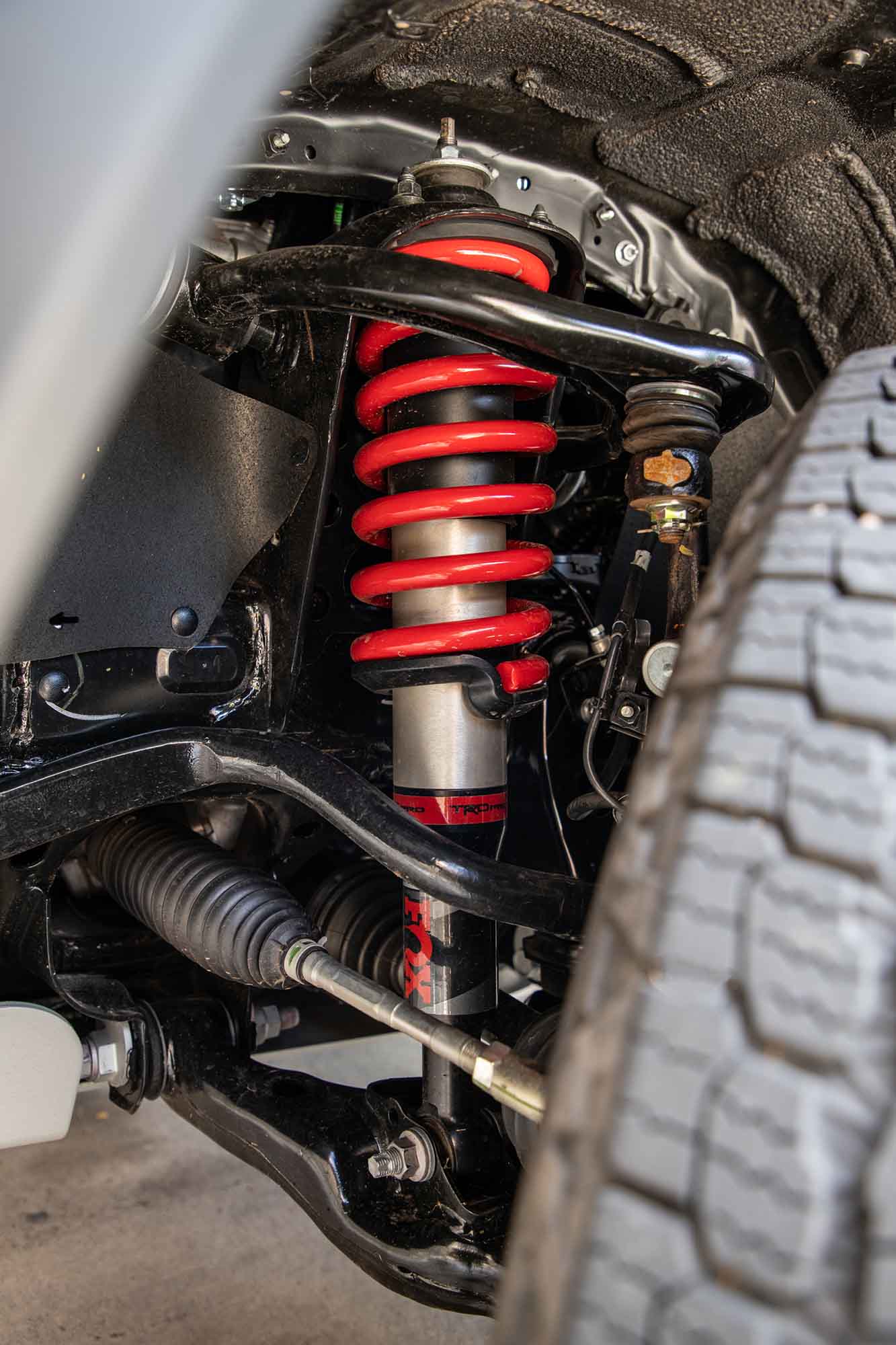
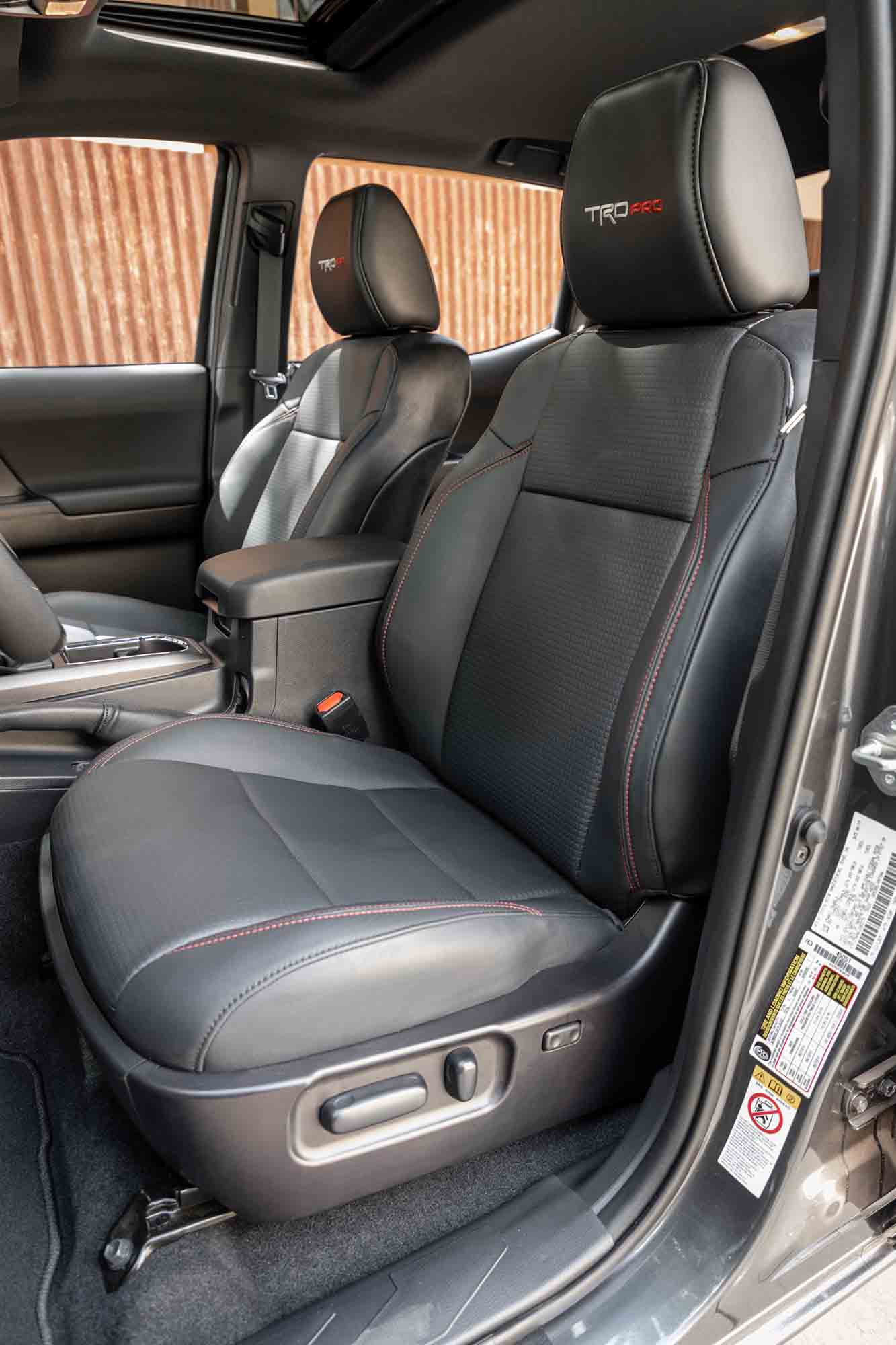
“We changed some of the internal bypass hole locations as well as the piston stack to get the best blending of ride and handling balance,” says Wilson. “We instantly saw an improvement in ride quality from small rock and gravel isolation that’s 1-2-inches in diameter.”
The last TRD Pro we tested would take a pretty hard hit when it bottomed out on the rear bump stops. And that kept us from exploring the truck’s limit too often.“We wanted to put a little more control into the rear through the dampers, a little more bottoming resistance before it got into the jounce bumpers,” says Wilson. “We worked really hard on that.”
The Tacoma’s stout drivetrain remains as it was. And that’s no bad thing. Up front is an 8-inch open IFS differential and out back there’s Toyota’s 8.7-inch solid axle with an electronic locking differential. And, although six-speed manual trucks receive 4.30:1 gears (and a deeper 3.98:1 First Gear), our six-speed automatic truck wore 3.90:1 gears and used a 3.60:1 first gear.
Under the Pro’s hood is the standard 3.5-liter V6 producing 278 horsepower at 6,000 rpm and 265 lb-ft of torque at 4,600 rpm. And mentioned before, it’s linked to a six-speed automatic with overdrive gears in the last two speeds. The power splits to the axles with a dash knob-actuated transfer case with a 2.57:1 low range. Slowing the Pro are 10.75-inch discs up front and 10-inch drums in the rear. And capping the axles are 265/70R16 Goodyear Wrangler All-Terrain Adventure with Kevlar tires.
The Pro boasts the best numbers of any Tacoma with an approach angle of 35 degrees (3 degrees improved over a TRD Off-Road) and a departure angle of 26 degrees (2.5 degrees up from the TRD Off-Road). And we measured almost 10 inches under the beefy TRD front skidplate and 9.25-inches under the rear axle.
At the scales, our Pro weighed 4,640 pounds. That’s just 40 pounds more than the 2017 TRD Pro we tested. And it’s precisely 100 pounds more than the TRD Sport we spent time with in 2018. Our truck carried a rated payload of 990 pounds and could handle a 6,400-pound trailer.
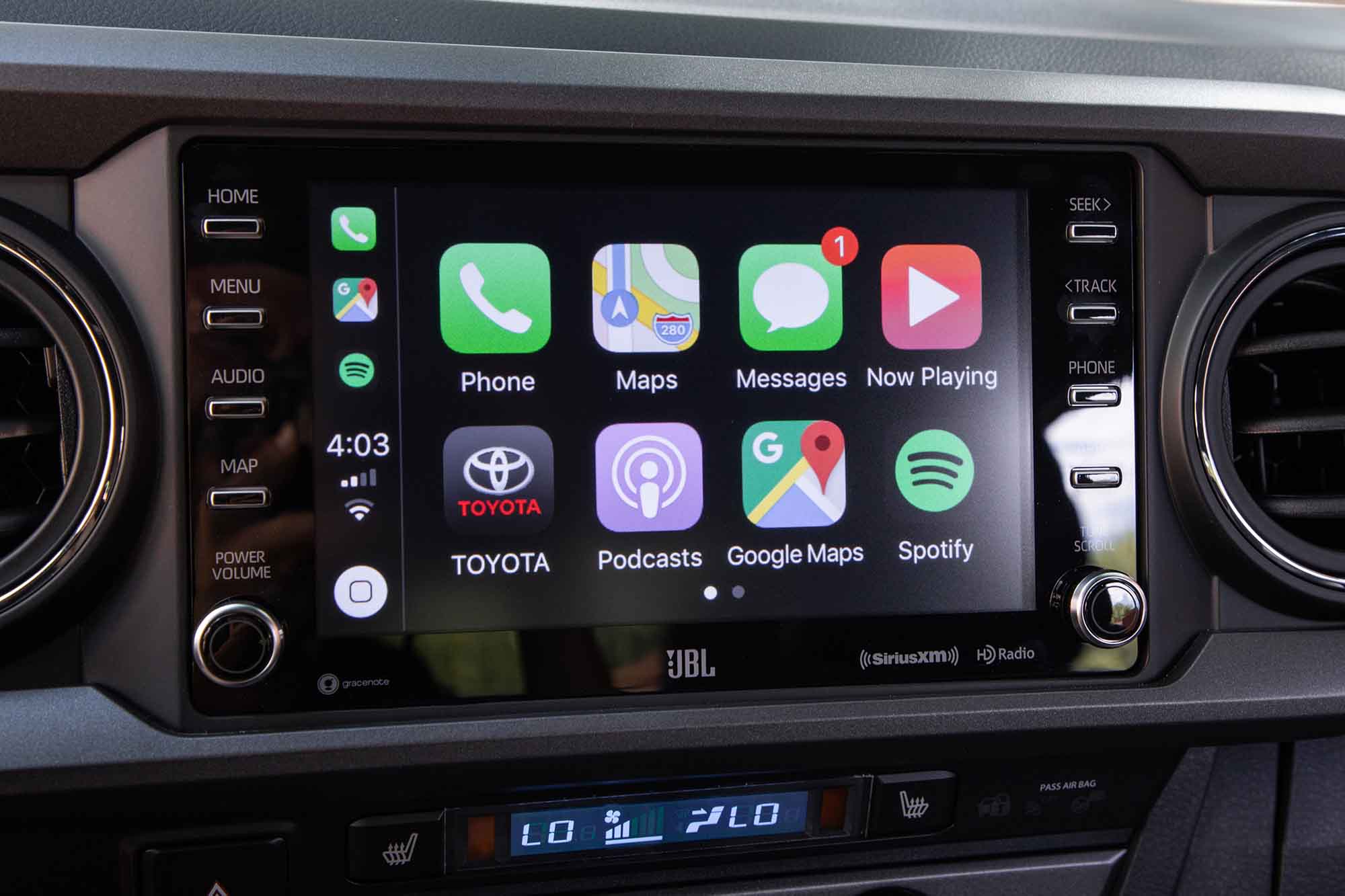
Tacoma owners can rejoice that Toyota has finally seen the light. Android Auto and Apple CarPlay are now part of the factory infotainment system. One no longer has to rely only on Entune.
On the Street
Toyota has some great colors for their TRD trucks. Army Green is new this year and one of our favorites. The new headlights do make the Taco’s face look a little more modern and aggressive—not that it needed help. It looks tough on the street, especially with the snorkel (a $725 option). However, Toyota warns that opting for the snorkel means you can’t take the Taco through any drive-through car washes.
Our truck’s 10-way power seats were comfy and generally we dig the Taco’s interior. But this is a mid-size truck, so the back seat isn’t great for larger bodies. Hopefully, the next-generation truck will have a slight wheelbase stretch to accommodate more legroom and perhaps a more relaxed seatback angle. The TRD Pro is the top of the range, but Toyota doesn’t make a big deal about that when it comes to the interior. Yes, there are TRD Pro logos around the cabin, but it could still use some unique design touches.
Around town, we found the steering to feel a bit heavy. But once speed builds, the weighting is good. The suspension tune seems spot-on for the street. As promised, the calibration is a bit softer than the last TRD Pro Tacoma we tested. Large impacts and smaller ones seem to disappear smoothly and silently beneath the truck without rattling driver or passenger.
Dig deep into the throttle and the Pro isn’t slow. But with this engine everything happens too high up in the rev range. The engine makes its peak torque way up at 4,600 rpm. So, you really need to drive it hard to get moving. The TRD exhaust has a decent growl to it. But on a long freeway drive at a constant speed, the sound can drone a bit. Just about every competitor has a more exciting and torque-rich engine option for their mid-size rig. It’s time Toyota had one too.
The six-speed automatic could use an update as well. The Tacoma’s competitors all use eight or even 10-speed automatics. So, unless you drive with your right foot flat to the floor, the Pro consistently hunts to find the right gear. It’s also a bit lazy; shifting seems to lag for a moment before an actual downshift happens. It’s frustrating. Sport mode improves performance, but it could certainly use a more aggressive tune.
On a dead-flat freeway at 70 mph, the engine would rev right at 1,900 rpm in sixth gear. But it didn’t take much of a grade for it to drop a gear briefly to 2,200 rpm and then sit in Fourth gear revving up at 3,000 rpm. Even though the V6 likes to rev, the Tacoma returned 19.1 mpg. That’s decent fuel economy for a truck with an off-road package. The last TRD Pro truck we tested averaged a similar 19.6 mpg. But the best fuel economy we saw from a Tacoma was the TRD Sport, which was able to deliver 20.2 mpg.
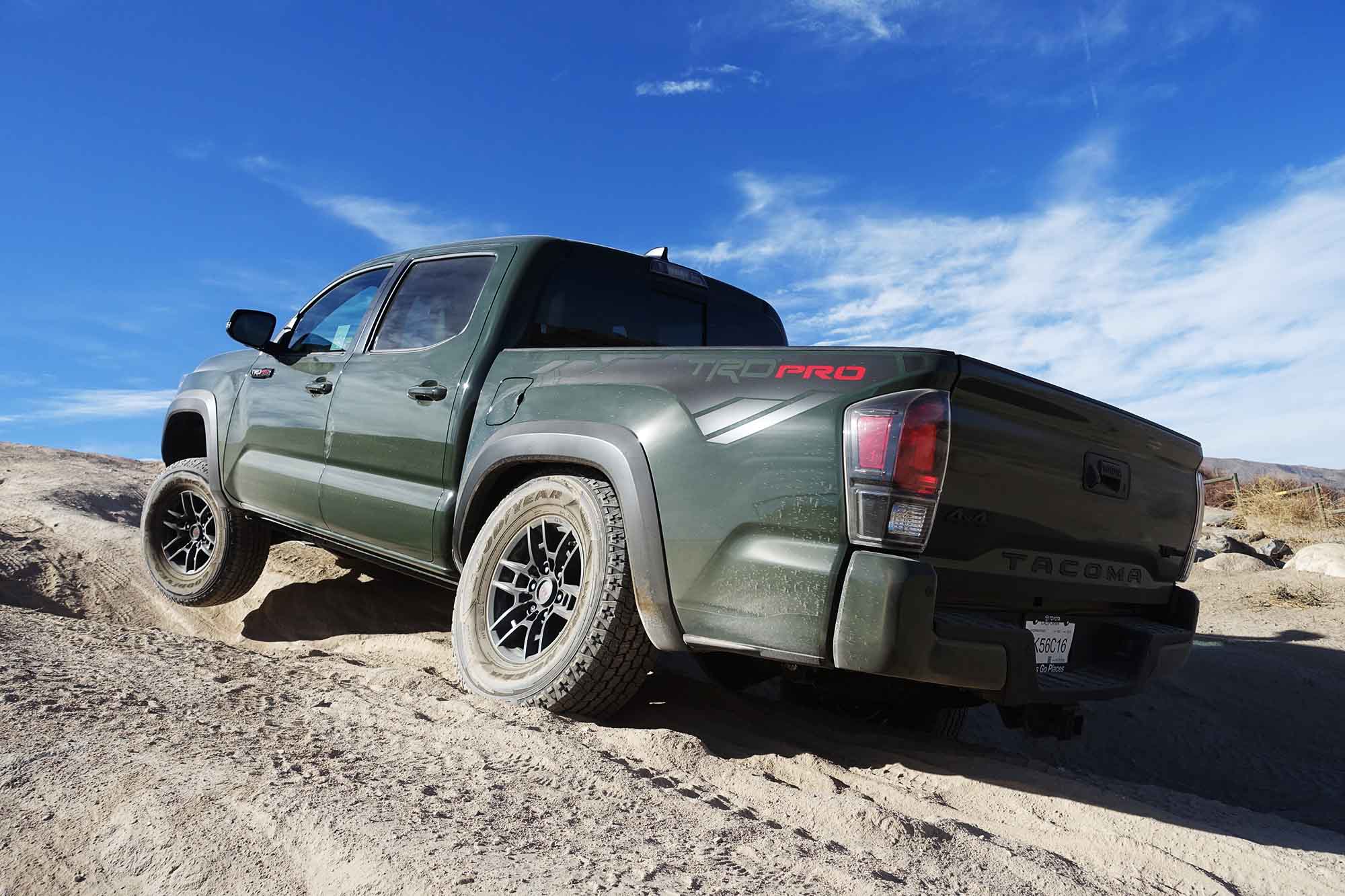
The Tacoma TRD Pro is at home on the trail. The re-tuned suspension can tackle desert berms and whoops with more control. And thanks to the locking rear diff and a very responsive traction control system, the Pro crawls well too. Now, if only the Tacoma could get some attention under the hood.
On The Trail
Tacomas are rare amongst their peers in terms of out-of-the-box capability. Most of the competition practically requires an off-road package to have any fun in the dirt. Not Toyota. Even the lowest-level 4X4 Tacos have a decent minimum-level of off-road chops. And as the top model in terms of capability, this TRD Pro was certainly no exception.
Poke your head underneath the front bumper and it’s impossible not to notice that massive TRD skid plate. And we were glad to have it because you can carry some speed in this 2020 Tacoma over some reasonably rough fire roads. On our rutted test two-track, an average 4X4 can hit around 20 mph. But this new Tacoma was happy at 40 mph all day long. That’s about 5-10 mph faster than the last TRD Pro we tested here. Drive right up to that limit, and the Pro rides smoothly. Push the speed a little too much and the rear will bottom. But the impact isn’t harsh like the last truck. And at these speeds, this new Taco Pro is much more controllable than the previous one. Our confidence in the truck, as TRD Engineer Wilson predicted, is much higher.
In the sand the Pro was a real, well, pro. Just leave it in 2WD, turn off the traction control and the Tacoma is a drift machine. It was fun. But boy, it could use more motor. We found ourselves locked in the transmission’s manual mode constantly flooring the throttle, then backing out and flooring it again instead of simply riding a wave of low-end torque.
When it was time to slow down and do some crawling, we were longing for a simple lever to engage 4WD. Instead, Toyota provides a fiddly plastic rotary knob that feels cheap. Worse, it doesn’t always put the transfer case in the mode you want on the first try. Frustrating.
Still, the Tacoma is a champ at slow speed four-wheeling. The Pro model has quite a few traction tools to get the job done. Of course, low range is the first step. Then you’ve got five settings in the truck’s Multi-Terrain Select (MTS) knob to help manage wheel slip. And, that’s followed by locking the rear axle. On our roughest and steepest test hill, the Pro couldn’t quite crawl to the crest even with the axle locked and the MTS in “Rock” mode. That’s because the rear pumpkin got hung up and was dragging on some crumbly rock in the middle of the trail.
But on the second attempt, we hit the hill with some mojo and used the “Loose Rock” setting to allow for more tire speed. The Tacoma walked its way up and crested the top without a problem. On the way back down, we engaged the truck’s hill descent control, which is excellent, if a little noisy. Here, you’ve got five speeds to choose from, so the way down was very controllable. On this downhill grade, we were able to play with the camera system a little. It’s a great system to have. But didn’t offer quite as many views of the trail as the last GMC AT4 we tested.
On the dirt mogul trail section, the Pro had an easy time crawling. The suspension articulation is good considering this class of truck. But we did run out of wheel travel and sky a tire here and there. Still, with the MTS in its most aggressive “Rock” mode and the rear axle locked, the Pro simply walked right up.
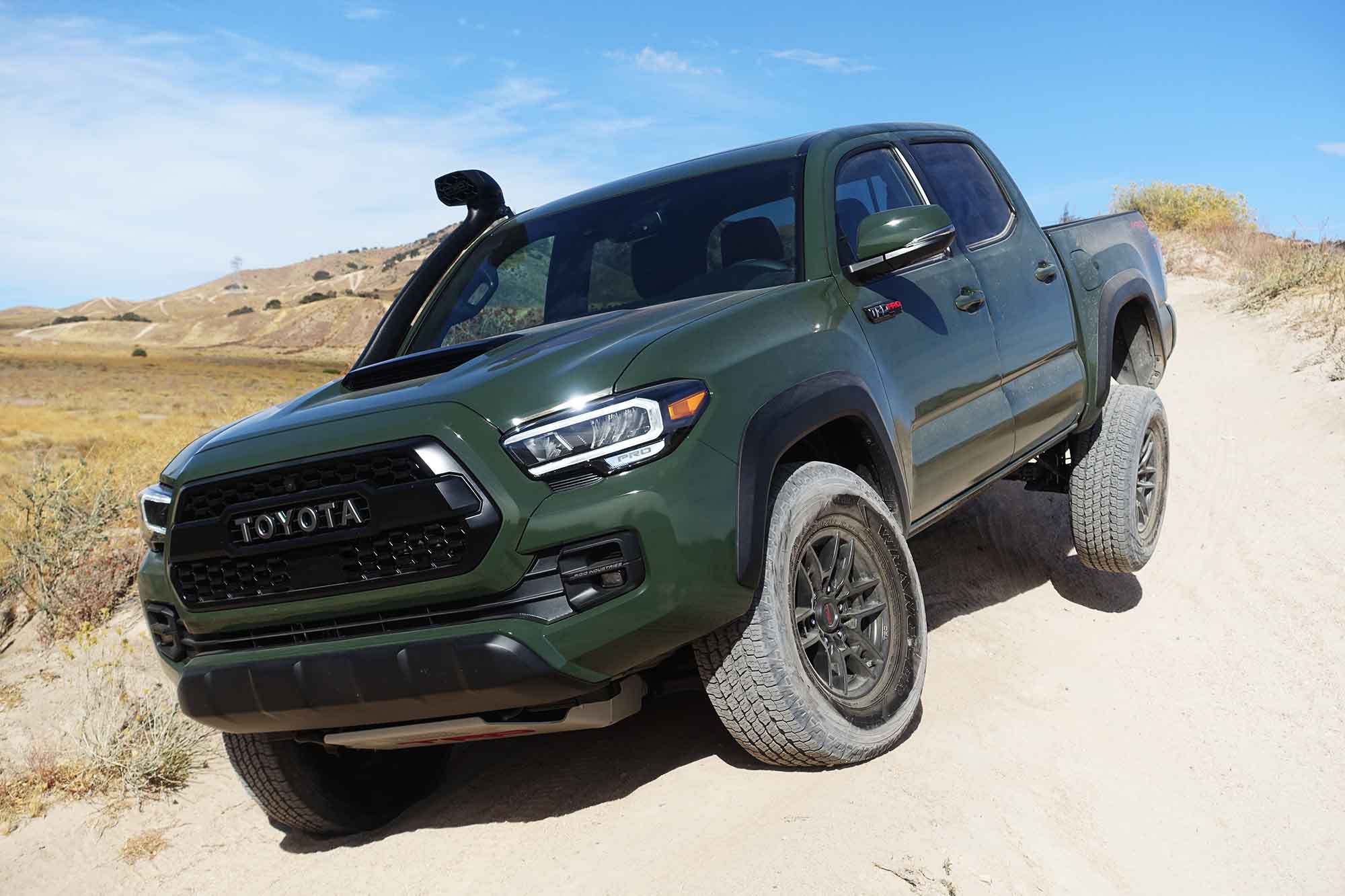
The Toyota Tacoma TRD Pro is capable and comfortable, but is it worth almost $50,000?
The Bottom Line
The TRD Pro is an excellent four-wheeler. Sure, it could use a more powerful engine and a transmission with more gears. But here is a stock 4X4 that can handle real trail work without compromising anything on the street. Better still, the improvements to the suspension are worthwhile no matter what speed the truck travels. But at almost $50,000, this isn’t a cheap truck. And if you plan to buy a Tacoma and modify it with a suspension and larger tires, the Pro isn’t the right truck. Why buy a great suspension and then throw it away? Better to start with a lower level truck.



2